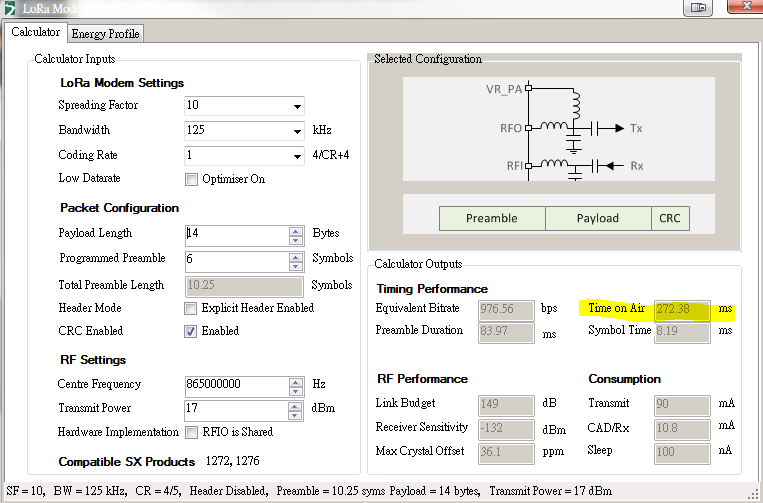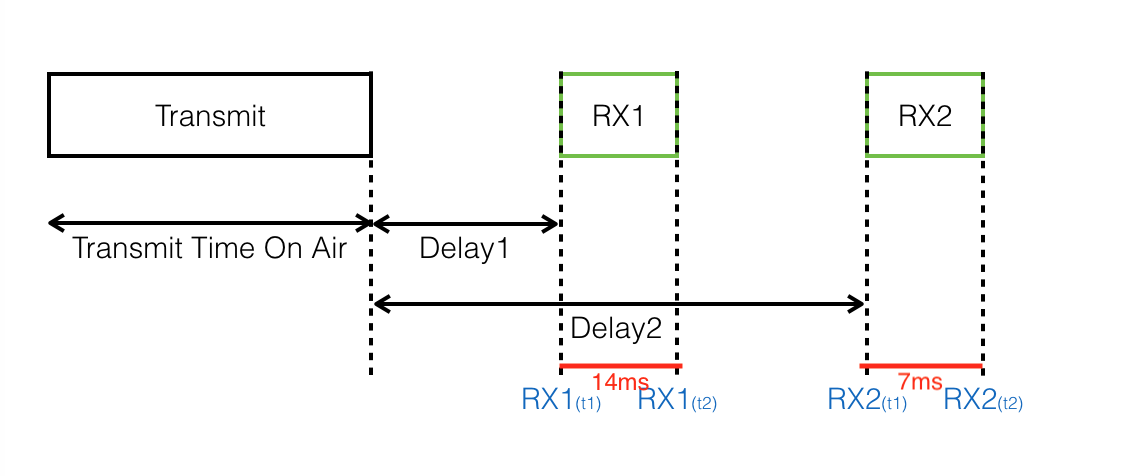I have a question. I TX the data expenses 272.38 ms(Time on Air) Transmit.(image 1)
But I found Class C device RX1 open windows time only 14 ms.(image 2)
Why RX1 can receive the data? 272.38 ms > 14 ms
image 1:

image 2:

I have a question. I TX the data expenses 272.38 ms(Time on Air) Transmit.(image 1)
But I found Class C device RX1 open windows time only 14 ms.(image 2)
Why RX1 can receive the data? 272.38 ms > 14 ms
image 1:

image 2:

I don’t understand your question but what I see is 2 totally different frequency’s.
what do we see on image 2 ?
Sorry. I not change the frequency. Because frequency can’t influence the Time on Air.
I have two device . One TX ,other one RX. Two device parameter the same.
TX device : Time on Air calculate is 272.38 ms
RX device : RX1 only 14 ms.(image 1)
Why RX device can receive the data ?
Transmit time > RX Windows open time.(RX device only 14 ms time to get data, but TX device transmit data need 272.38ms.)
image 1

The Class C end-device will listen with RX2 windows parameters as often as possible. The
end-device listens on RX2 when it is not either (a) sending or (b) receiving on RX1,
according to Class A definition. To do so, it will open a short window on RX2 parameters
between the end of the uplink transmission and the beginning of the RX1 reception window
and it will switch to RX2 reception parameters as soon as the RX1 reception window is
closed; the RX2 reception window will remain open until the end-device has to send another
message.
what is the relation with the current Things Network ?
Because I confuse the RX1 how can receive the data?
So class A device can’t receive any data use the RX1 ?
Because RX1 windows too small.
Only Class C device RX2 can receive data.
The server can respond either in the first receive window, or in the second receive window, but should not use both windows.